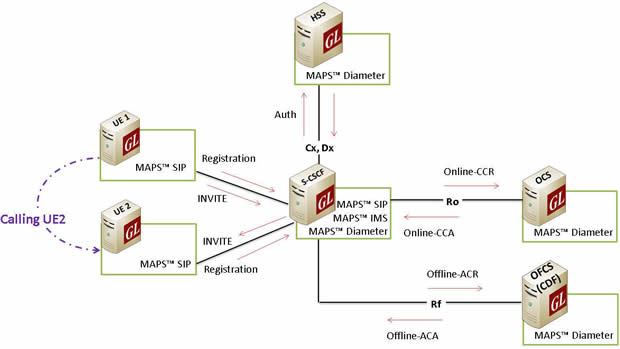GL enhances IMS emulator with online and offline charging system
Speaking to the press, Mr. Karthik Ramalingam, a Senior Manager for product development of the company said: “The IP Multimedia Core Network Subsystem (IMS) is a collection of different functions. IMS uses Session Initiation Protocol (SIP) to access multimedia and voice applications from wireless and wireline terminals creating a form of fixed-mobile convergence. For accounting, authentication, and charging functions, IMS uses Diameter protocol.”
He added, “Any IMS terminals, using IP or SIP user agents, can access or register directly with the IMS functions. S-CSCF is the central IMS node that acts as a SIP Server for controlling sessions. S-CSCF handles SIP registrations and decides to which application server(s) the SIP message would be forwarded to avail services. It uses Diameter Cx and Dx interfaces to access user profiles in HSS. The S-CSCF also communicates accounting information with the charging functions such OCS and OFCS.
The S-CSCF node in MAPS IMS Multi Interface is designed to simulate end-to-end Online and Offline Charging procedures, by simulating S-CSCF node interface towards UEs (SIP), HSS (Cx/Dx), Online Charging System - OCS (Ro), and Offline Charging System - OFCS (Rf) functional entities. MAPS S-CSCF multi-interface node interacts with the SIP (UEs) receiving the request and responding using SIP protocol. Registration and Authentication of the UEs is performed at HSS. And MAPS S-CSCF interacts with the OCF for processing Online charging procedures and with the OFCS for processing Offline charging procedures.”

Mr. Ramalingam further explained, “The charging mechanism is based on IMS network nodes reporting accounting information upon receiving various SIP messages. The CSCF node in IMS network performs the role of a Charging Trigger Function (CTF) entity to issue charging events to an Online Charging System (OCS). The charging events can be immediate (IEC), event-based with unit reserve (ECUR), or session-based with unit reserve (SCUR). This reporting is achieved by sending Diameter Charging Request (CCR) [Initial, Update and Termination Events] and Accounting Requests (ACR) [Start, Stop Event] from the IMS nodes to the Billing System.”
He added, “During Online charging (pre-paid services) process, S-CSCF acts as a SIP application server controlling the sessions when the user runs out of credits. The Application Server (AS) uses the Diameter Ro interface to forward the charging requests towards an OCF. Session charging with unit reservation (SCUR) is used, where the required numbers of credit units are reserved in the user's account and then service is provided. After the service is over, the number of spent credit units is reported and deducted from the account; the reserved credit units are then cleared.
And during Offline Charging the SIP network entities (P-CSCF, I-CSCF, S-CSCF) use the Diameter Rf interface to send accounting information to a Charging Data Function (CDF). The CDF will collect the information, and build a call detail record (CDR), which is sent to the billing system (BS).





